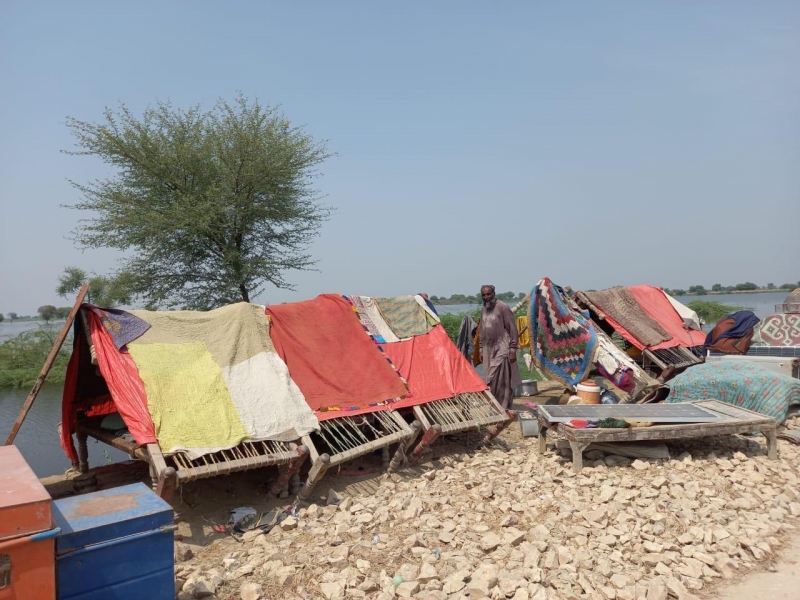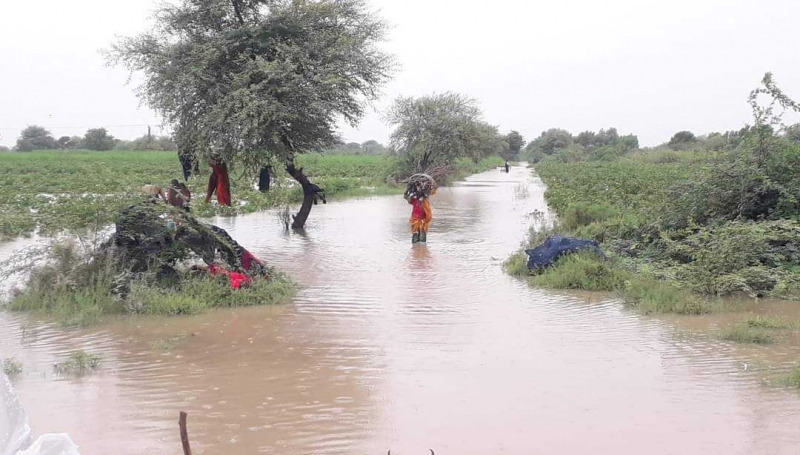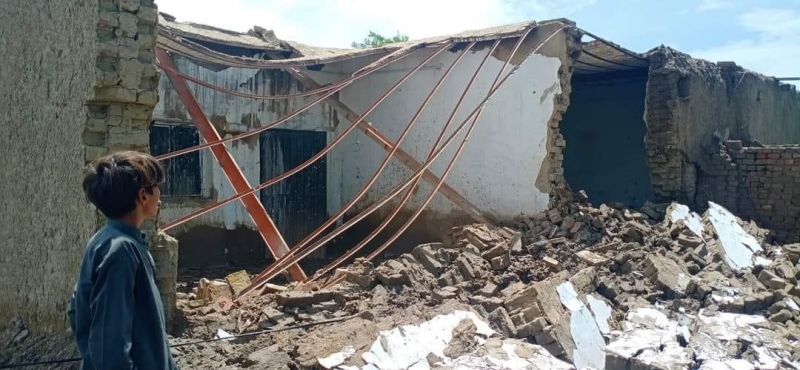This year (2022), Pakistan has been hit by the worst-ever rains and floods in history. The swiftness of the floods was so sudden that neither an evacuation plan could be executed nor contingency schemes could benefit the larger population. Particularly those residing in low-lying rural areas.
The continued week-long rains coupled with an overflow of water from upstream in the Indus River crippled the country of 220 million within a few days with two-third of the country’s land under water within a short spell of seven days.
The official map released by local authorities, also verified by the UN agencies, marked how the water overwhelmed small villages, towns and cities along with large areas of agricultural land within hours and days. Cotton crops cultivated on thousands of acres washed away in hours.

According to the National Disaster Management Authority (NDMA) over 1600 people have lost their lives, 12000 got injured and over 33 million people have been affected due to losses of their houses. The damages to infrastructure are huge as the 13000-kilometre road network has been wiped out, 400 bridges collapsed, and several hundred buildings including schools have been completely or partially damaged.
General public perception raises serious doubts over the performance of the government before and during heavy rains. Zulfiqar Shah
The initial losses are estimated to be around 40 billion US dollars, almost equal to country’s annual budgetii. Losses to agriculture, livestock and livelihood have both short-term and long-term impacts, particularly on the working-class population, two-third of them are already living below the poverty line.
Though the entire country has been affected, the provinces of Baluchistan and Sindh have been hit hardest by the floods.
Of the 33 million affected population, 15 million are reportedly in
Sindh alone, which makes up 30% of the population of the province.
Except for the coastal city of Karachi, almost the entire Sindh province
was affected in one way or the other. Over 700 people including over
313 children were killed in the flooding in Sindh alone.
Authorities report that the province received 800 times more rain than the annual average during the last 10 years and it was beyond their capacity to avert the catastrophe. General public perception raises serious doubts over the performance of the government before and during heavy rains.
Officially, the calamity is being projected as an effect of climate change, which to a large extent is true and has been echoed at the highest fora such as the UN General Assembly in New York last week and would require collective global efforts to address.
However, local infrastructure factors need not be overlooked. Natural waterways have been encroached upon and interfered with and infrastructure have been left in a negligent state. Lack of timely response by provincial authorities have also likely multiplied the magnitude of the disaster.

Pictures of millions of displaced people running after small pieces of bread in a state of despair have been published widely in international media.
What it reflects is that people were already very poor living with an equally poorly managed infrastructure and at the fringes of marginalization was further exposed. “People were already poor living in mud houses with poor sanitation facilities. Floods just removed the curtain,” says Aijaz Shaikh, a Karachi-based journalist who recently visited flood-affected areas. “You need a different approach otherwise you would have an army of displaced people every few years running for food,” he added.
The international community has to contribute to the rebuilding efforts. Zulfiqar Shah
Though the relief work is still going on and may continue for the next few more weeks as people need to stay in relief camps and depend on cooked food and raw rations provided by local authorities and charity organizations, it is important to start thinking about their permanent rehabilitation.
It is not going to be an easy task for a country like Pakistan, which was already on the verge of economic collapse and has just been rescued by an IMF bailout package. The international community has to contribute to the rebuilding efforts.
Despite ongoing challenges such as the Ukraine war, the response of the global community has been very positive with the UN secretary general Guterres visiting Pakistan within weeks of the flooding and personally launching an aid appealiv.
Many countries have generously provided emergency aid and have pledged continued support. It is important to address core issues and build back better.

The new infrastructure must not only be climate sensitive and climate resilient, but also be constructed in a participatory manner taking into consideration the local needs.
Equally important would be to address marginalization among rural working communities, which have suffered for centuries at the hands of the feudal system and chronic poverty. This inequality stems from an unequal distribution of resources and violation of labour rights particularly for agriculture workers.
The response to floods should be considered an opportunity to improve infrastructure and bring an end to the apartheid of discrimination and marginalization that has ruined an otherwise resource-rich country.
The NHRF invites different actors within the human rights field to contribute on this blog. The opinions expressed here are those of the authors.

